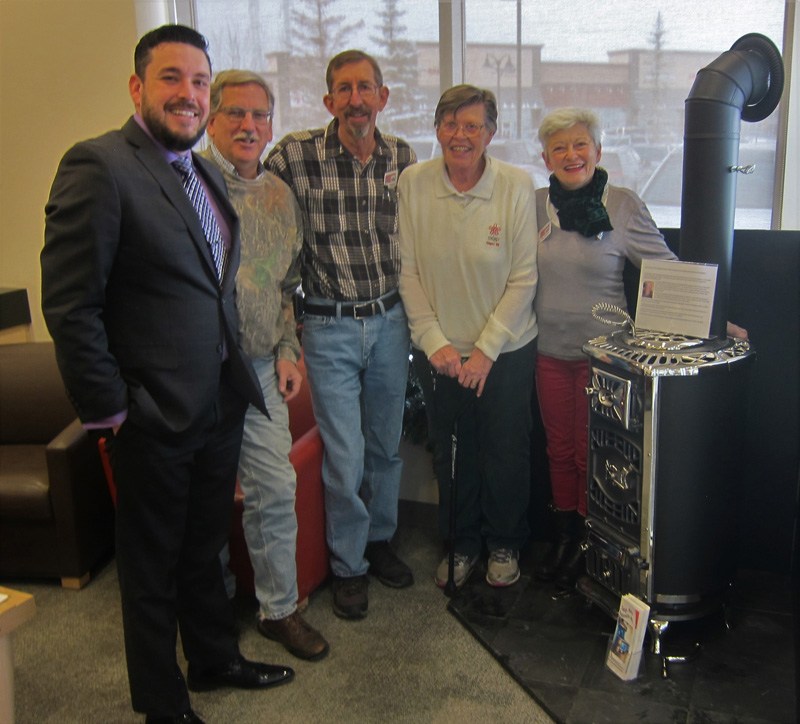
An 80-year-old Quebec Heater Stove that was used in homes in Chestermere is now on display at Scotiabank.
The Quebec Heater Stove was in the home that Pete and Agnes Lester lived after they married. The stove heated the Lester’s home in the “shack” and living room of the house until they got propane heat in 1952.
Later, the Quebec Heater Stove was regulated to the well house to keep the well from freezing. The property was then sold in 1972, and the heater, along with many other items were moved to the farm where Kay and Glen Clarke currently live.
“I have vague memories of the heather in the house. I certainly have memories of it being useful after the house had a different kind of heat,” Kay said.
In 2012, the Chestermere Historical Foundation received a grant to obtain material that would show the history of Chestermere. The foundation purchased the stove and had it restored.
Kay thought restoring the Quebec Heater Stove was a great idea, as personal history and community history is extremely important to her.
“You have to know where you came from in order to know where you’re going,” Kay said.
She added, “The stove is among many artifacts that would have been used in homes around Chestermere. Some of the artifacts don’t go that far back, we have a dial phone, and a butter churn that would have been used at the same time as the stove.”
Restoring the Quebec Heater Stove was a relativity simple project for owners of Vintage Stove Restoration Shane and Joanne Mac.
“We’ve had a lot of different kinds of stoves, everyone is slightly different,” Joanne said.
To properly restore the stove, Shane and Joanne firstly went through it to determine what pieces needed to be replaced, they found the replacements, and then began to take the stove completely apart.
New sheet metal was placed on the stove; every piece of nickel was taken down to the raw metal then plated and polished.
“Then it’s a matter of taking the old stove body and measuring where the doors and everything will go, then we start the process of putting everything back together,” Joanne said.
She added, “We rebricked it in the inside, that stove is ready to burn again; it’s a functional piece.”
In order for the stove to be functional, every piece of the stove was cemented, which ensures the stove is as airtight as it originally would have been.
The entire process to restore the Quebec Heater Stove took between 25 to 35 hours.
Although restoring artifacts can take long hours and involved extremely precise work, it is essential for Joanne to showcase history.
“It’s a part of our heritage, our parents and great grandparents, that’s all they had, the grew up with those stoves,” she said.
For more information please visit the Chestermere Historical Foundation website at www.chestermerehistoricalfoundation.org.








